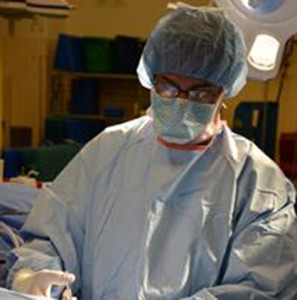What’s New in Equine Surgery? Standing Versus General Anaesthesia
 Australian Veterinary Association
Australian Veterinary Association
Veterinarians from Australia and New Zealand are in Melbourne this week to discover all the latest advances in equine surgery at the Equine Veterinarians Australia Bain Fallon Conference.
Equine veterinarian, Dr Bruce Bladon from the UK, will be giving a Twilight Tutorial, explaining the growing trend towards surgery in the standing horse and he’ll be providing evidence supporting this approach over general anaesthesia. He says the use of general anaesthetic in equine surgery comes with an increased risk of complications that could lead to higher mortality rates.
“The overarching change in recent years has definitely been in relation to surgery in the standing horse. This is ironic, because we’ve seen considerable developments in the field of general anaesthesia along with improved recovery from anaesthesia, which means it’s much less dangerous for a horse to undergo anaesthesia nowadays.”
“Despite these advances, I’ve witnessed cases where surgery under general anaesthesia is both dangerous and unnecessary, for example, in the surgical treatment of splint bone fractures. The other key area where surgery is associated with complications during recovery from anaesthetic is fracture repair. These sort of complications can now be avoided thanks to our ability to perform surgery in the standing sedated horse,” he said.
Dr Bladon refers to earlier research, which revealed a 1% mortality rate for horses undergoing routine surgery. However, with significant advances in veterinary science and from looking at results within his own clinic, Dr Bladon suggests that all surgical practices should be aspiring to a mortality rate of one in a thousand rather than one in a hundred.
“Equine surgery can be very complex. But as veterinarians, we care about our patients and we aim to select surgical methods based on what will give a horse the best outcome.”
“Fracture repair in the standing sedated horse was originally adopted in Australia. We’ve been using techniques for standing fracture repair in my clinic for some time now with excellent results. In fact, we’ve never achieved comparable results with other ways of repairing these fractures,” he said.
He also highlights other areas of surgery which are now routinely undertaken in the standing horse, including laparoscopy. Dr Bladon explains that this technique is not necessarily replacing surgery under general anaesthesia; rather, it’s opening up a new field of surgical procedures which simply could not be performed before.
The Bain Fallon Conference is being held 17-21 July, Pullman and Mercure Albert Park, Melbourne.










